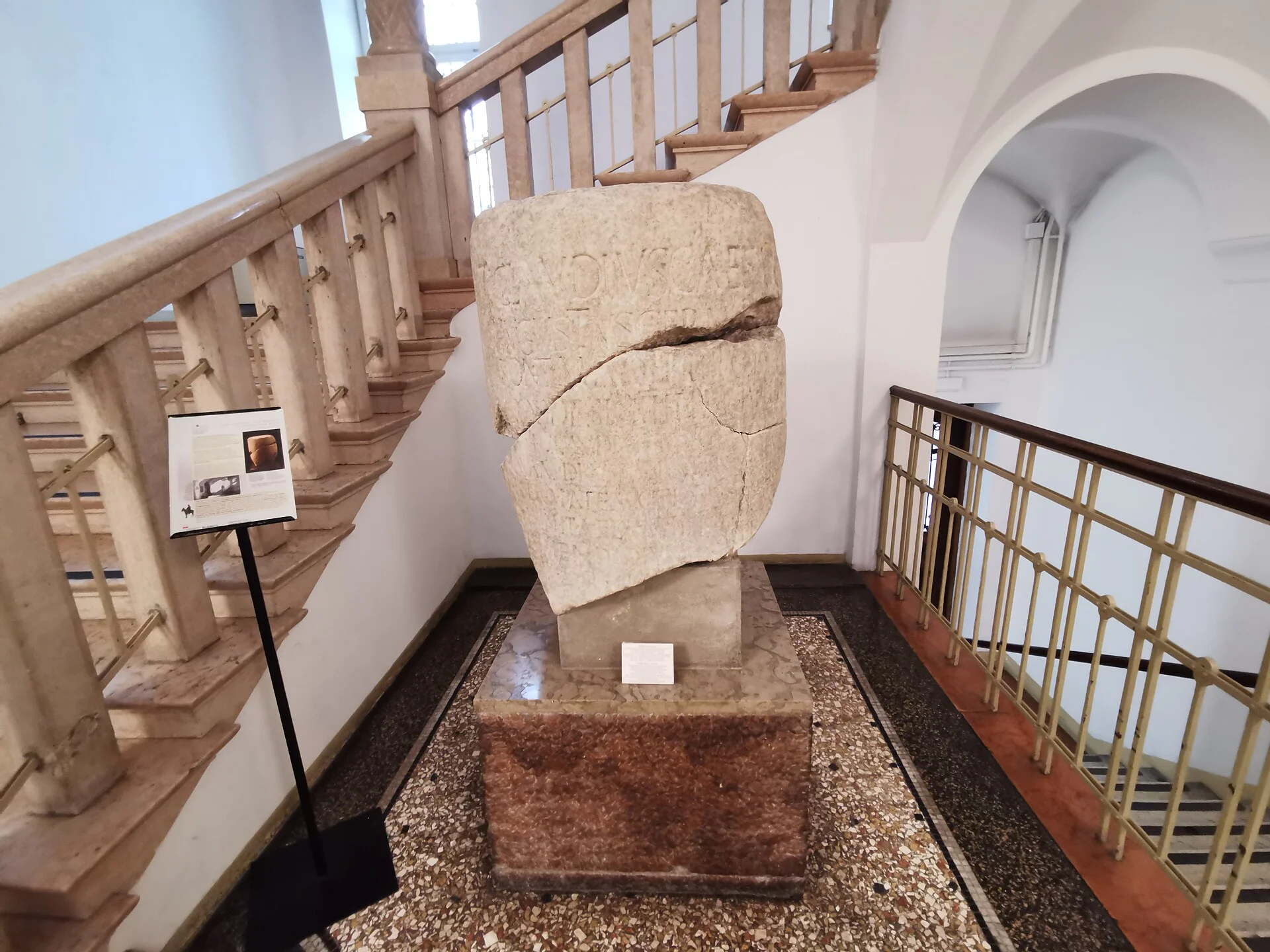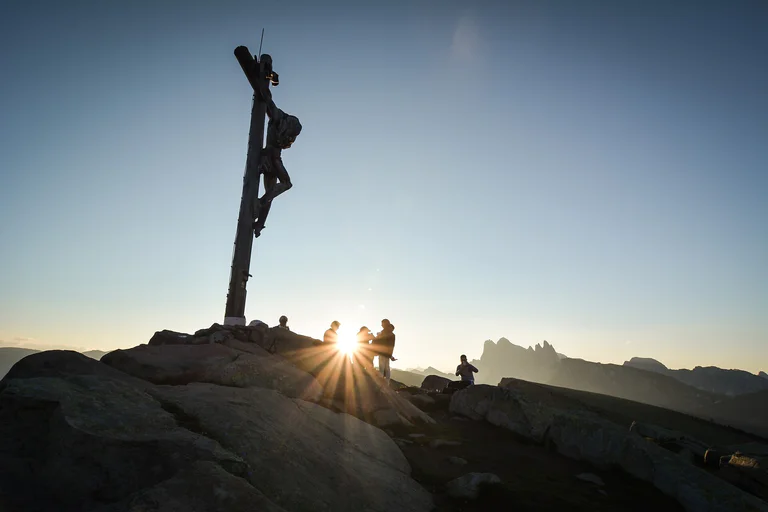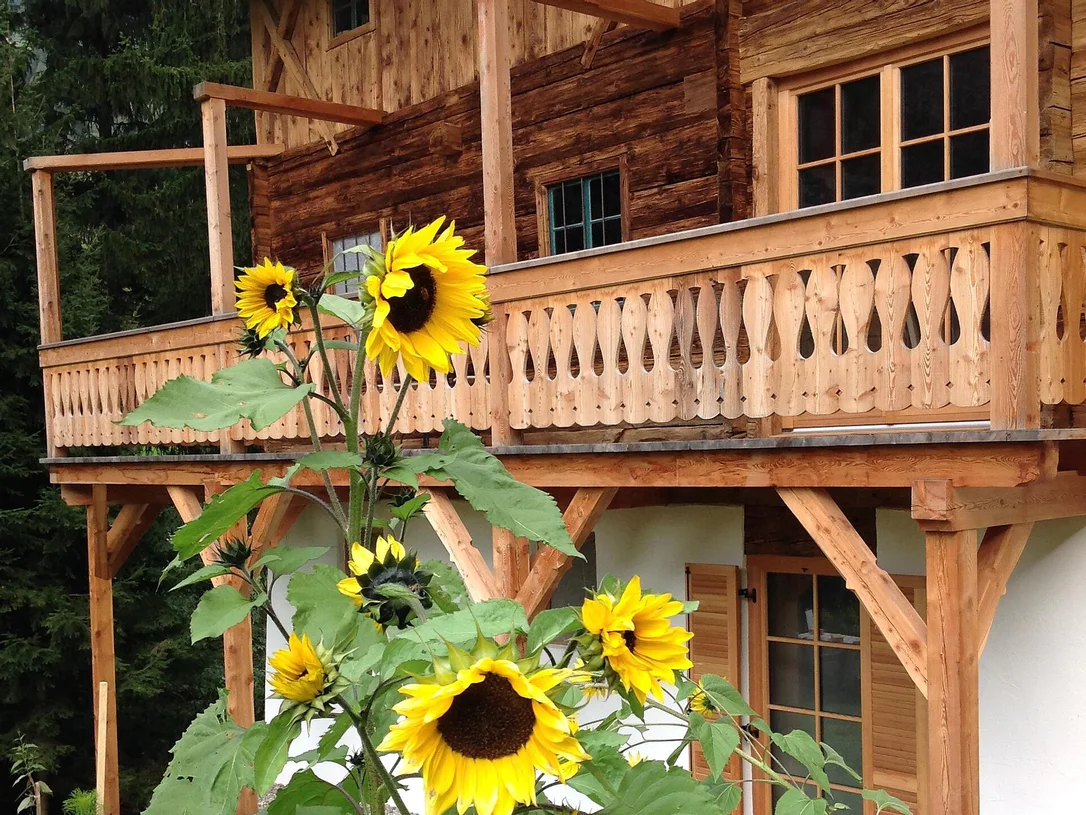Die „Tschrinmuar“ – Auszug aus einem authentischen Manuskript eines Augenzeugen.
Am 20. August 1902 war vormittags eine drückende Hitze, nachmittags erhielten wir einen für das Feld höchst notwendigen Regen, gegen 3 [15] Uhr wurde das Gewölke so schwer, daß es fast dunkelte, ohne jedoch die Heftigkeit des Regens zu vermehren, und niemand ahnte, welch furchtbares Unglück in nächster Stunde über Prad hereinbrechen sollte. Solange die Gegend von Prad bewohnt gewesen ist, wird eine so schreckliche Katastrophe nie stattgefunden haben. Um vier Uhr abends hörte man Rufe: „Die Tschrinmuar kimmb“. Das ganze Dorf, insbesondere die Feuerwehr, eilte schnell den Bedrohten zu Hilfe, jedoch diese Hilfe konnte sich nur noch auf Rettung von Menschen und Tieren ausdehnen, denn innerhalb einer Stunde war der größte Teil des Unterdorfes (bis zum Mühlbach) entweder eingemurt oder demoliert. 10 Wohn- und Wirtschaftsgebäude waren zerstört, 20 Parteien mußten ihre Wohnungen verlassen. Von der Wiesenfläche, welche oberhalb des Weges gelegen ist, der vom Dorfe unter den Pfaschen zum Nauhof führt, waren 2/3 mit meterhohem Geschiebe und darüber bedeckt in ca. 300 000 m. Im Dorfe selbst lag das Geschiebe stellenweise 5 m hoch. Bei den Rettungsarbeiten gingen zwei Menschenleben zugrunde, der 35jährige Jüngling Hironimus Thies, Schustermeister, und die 60jährige Anna Nigg. Ersterer wollte Letztere aus dem sog. Widelehause in Sicherheit bringen. Der betroffene Dorfteil bot ein jammervolles Bild, von ganz Vintschgau kamen Leute, um sich die Unglücksstätte anzusehen. Noch am selben Abend eilte ein Beamter der K. K. Bezirkshauptmannschaft Schlanders herbei, und am 21. erschien der Herr K.K. Bezirkshauptmann von Schlanders Rudolf von Ferraris selbst, tröstete die Verunglückten und versprach Hilfe von Seiten des Staates und Landes, am 23. August kam Reichsratsabgeordneter Schreffl und versprach in unserer hoffnungslosen Lage zuerst zum Statthalter zu reisen und von dort nach Wien, was auch wirklich geschah. Excelenz der Herr K.K. Statthalter Erwin v. Schwaz besuchte die Unglücksstelle und richtete durch seine Leutseligkeit und durch seine tröstende Worte die so schwer Betroffenen wieder auf, und wahrlich seine Versprechungen verwirklichten sich im viel größeren Maßstabe, als man zu hoffen gewagt hätte. Durch die Bemühungen des Herrn K.K. Bezirkshauptmannes des Herrn K.K. Statthalters wurde den verunglückten Bewohnern von Prad aus dem staatlichen Notstands-Fonde eine nicht rückzahlbare Unterstützungs-Summe von 90.000 Kronen zuerkannt. Durch diese Summe sowie durch die benützenden Sammelgelder wurde der Schaden größtenteils gedeckt und die Leute fassten wieder neuen Muth und Liebe zur Arbeit. Die Folge dieser Katastrophe war auch, daß die Gemeinde Prad dem Staate und Lande gegenüber berühmt geworden ist und infolgedessen großen Nutzen zog. Es wurde nicht bloß der Tschrinbach verbaut, sondern auch der Suldenbach; schon im darauffolgenden Jahre 1903 hat Staat und Land 166.000 Kronen zur Verfügung – Verbauung des Tschrinbaches zugesichert und weitere 100.000 Kronen ebenfalls zur Verbauung des Tschrinbaches in Aussicht gestellt. Die in diesem Zusammenhang nach Prad geflossenen Gelder bewirkten u. a. dass in der Folge die „Tschrinmuar“ auch „Kronenmuar“ genannt wurde.










































































